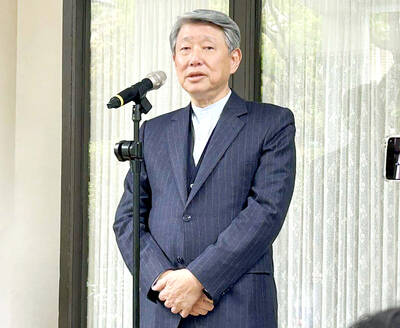Japan’s economy contracted for a second straight quarter in July-September, revised government data showed yesterday, indicating that weak global demand nudged the export-reliant economy into a mild recession.
Analysts expect another quarter of contraction in the final three months of this year due to sluggish exports to China, keeping the Bank of Japan under pressure to loosen monetary policy as early as this month.
“There have been some positive indicators out in October but there is still a good chance that Japan’s economy will suffer another contraction in the October-December quarter,” said Takeshi Minami, chief economist at Norinchukin Research Institute in Tokyo.
“The Bank of Japan may ease policy this month, as suggested in remarks by Deputy Governor Kiyohiko Nishimura last week. The bias is for further easing, so even if the central bank stands pat this month it will likely act in January,” he said.
Japan’s GDP shrank 0.9 percent in July-September from the previous quarter, revised government figures showed, unchanged from preliminary data reported last month. That compared with economists’ median forecast for a 0.8 percent contraction.
The figure translates into an annualized contraction of 3.5 percent in real, price-adjusted terms, which is also unchanged from the preliminary data issued last month.
The government revised GDP figures for April-June to show a small contraction of 0.03 percent, indicating that the economy contracted for two straight quarters and meeting the technical definition of a recession. The previous figure had shown growth of 0.1 percent.
Capital expenditure fell a revised 3 percent in the third quarter, compared with a 2.8 percent decline expected by economists and a preliminary reading of a 3.2 percent decline.
Separate data showed Japan’s current account surplus fell 29.4 percent in October from a year earlier, compared with the median estimate for a 59.2 percent annual decline, largely due to shrinking exports and increasing costs of fuel oil imports.
The nation’s consumer confidence and service sector business sentiment showed mixed results last month.
The survey’s sentiment index for general households, which includes views on incomes and jobs, fell for the third month in a row.
This prompted the government to cut its assessment on consumer confidence, saying there were signs of weakness.
Meanwhile, Japan’s service sector sentiment index, a survey of workers such as taxi drivers, hotel workers and restaurant staff, slightly improved for the first time in four months, but the government kept its view on the index that the economy remained weak.
Nishimura said last week the central bank will debate whether further stimulus is needed to support the economy, offering the strongest signal to date that it may loosen policy again at its next rate review on Dec. 19 and Dec. 20 in the face of growing political pressure.

MULTIFACETED: A task force has analyzed possible scenarios and created responses to assist domestic industries in dealing with US tariffs, the economics minister said The Executive Yuan is tomorrow to announce countermeasures to US President Donald Trump’s planned reciprocal tariffs, although the details of the plan would not be made public until Monday next week, Minister of Economic Affairs J.W. Kuo (郭智輝) said yesterday. The Cabinet established an economic and trade task force in November last year to deal with US trade and tariff related issues, Kuo told reporters outside the legislature in Taipei. The task force has been analyzing and evaluating all kinds of scenarios to identify suitable responses and determine how best to assist domestic industries in managing the effects of Trump’s tariffs, he

TIGHT-LIPPED: UMC said it had no merger plans at the moment, after Nikkei Asia reported that the firm and GlobalFoundries were considering restarting merger talks United Microelectronics Corp (UMC, 聯電), the world’s No. 4 contract chipmaker, yesterday launched a new US$5 billion 12-inch chip factory in Singapore as part of its latest effort to diversify its manufacturing footprint amid growing geopolitical risks. The new factory, adjacent to UMC’s existing Singapore fab in the Pasir Res Wafer Fab Park, is scheduled to enter volume production next year, utilizing mature 22-nanometer and 28-nanometer process technologies, UMC said in a statement. The company plans to invest US$5 billion during the first phase of the new fab, which would have an installed capacity of 30,000 12-inch wafers per month, it said. The

Taiwan’s official purchasing managers’ index (PMI) last month rose 0.2 percentage points to 54.2, in a second consecutive month of expansion, thanks to front-loading demand intended to avoid potential US tariff hikes, the Chung-Hua Institution for Economic Research (CIER, 中華經濟研究院) said yesterday. While short-term demand appeared robust, uncertainties rose due to US President Donald Trump’s unpredictable trade policy, CIER president Lien Hsien-ming (連賢明) told a news conference in Taipei. Taiwan’s economy this year would be characterized by high-level fluctuations and the volatility would be wilder than most expect, Lien said Demand for electronics, particularly semiconductors, continues to benefit from US technology giants’ effort

‘SWASTICAR’: Tesla CEO Elon Musk’s close association with Donald Trump has prompted opponents to brand him a ‘Nazi’ and resulted in a dramatic drop in sales Demonstrators descended on Tesla Inc dealerships across the US, and in Europe and Canada on Saturday to protest company chief Elon Musk, who has amassed extraordinary power as a top adviser to US President Donald Trump. Waving signs with messages such as “Musk is stealing our money” and “Reclaim our country,” the protests largely took place peacefully following fiery episodes of vandalism on Tesla vehicles, dealerships and other facilities in recent weeks that US officials have denounced as terrorism. Hundreds rallied on Saturday outside the Tesla dealership in Manhattan. Some blasted Musk, the world’s richest man, while others demanded the shuttering of his